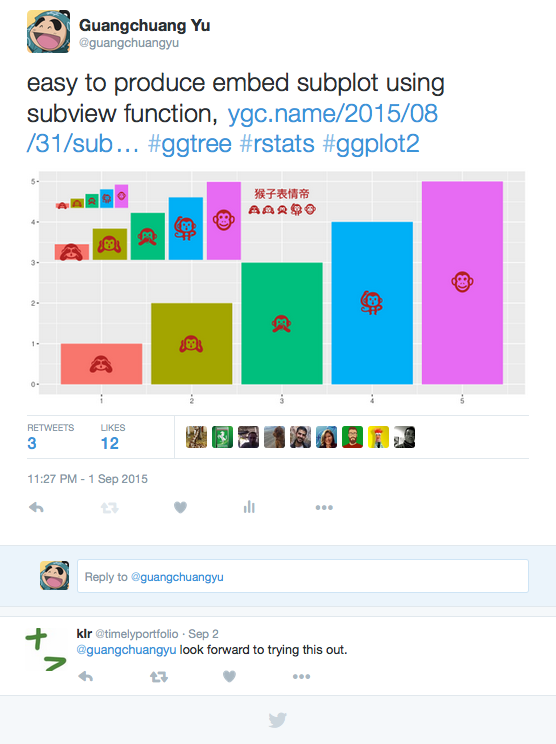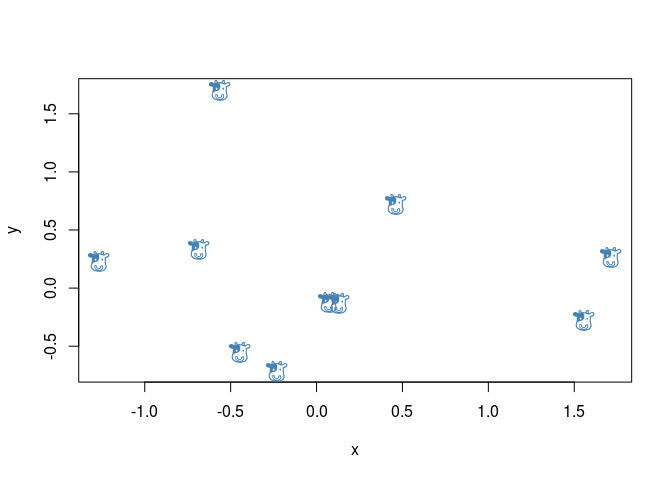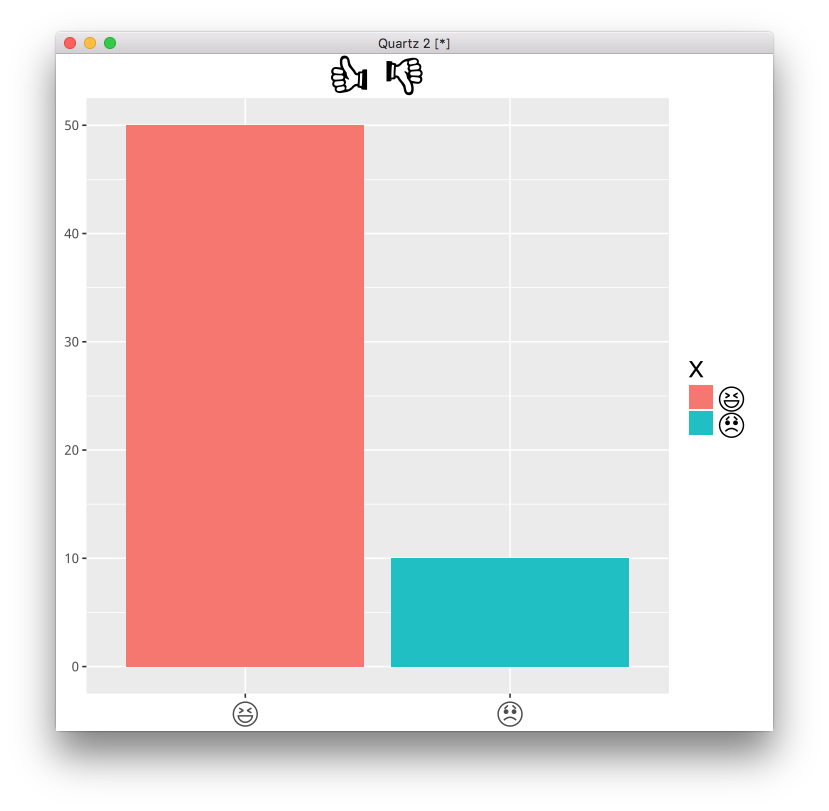use emoji font in R

I have played with emoji in R for a while. My solution of using it is different from what implemented in emoGG.
emoGG is a good attemp to add emoji in ggplot2. It render emoji picture (png) and creat a layer, geom_emoji, to add emoji.
In my opinion, emoji should be treated as ordinary font in user interface, albeit it maynot be true internally.
It would be more flexible if we can use emoji as ordinary font and in this way user don’t need to learn extra stuff.
I implemented my solution of using emoji in the R package emojifont. The package is very simple, pack some emoji fonts (currently only OpenSansEmoji.ttf) and use showtext to render the fonts, then we can use the font in either base plot or ggplot2.
emojifont
Installation
devtools::install_github("GuangchuangYu/emojifont")
load Emoji font
library(emojifont)
## list available emoji fonts
list.emojifonts()
## [1] "OpenSansEmoji.ttf"
## load selected emoji font
load.emojifont('OpenSansEmoji.ttf')
Emoji characters
To use emoji, we need to use their corresponding unicode. Emoji unicode can be found in http://apps.timwhitlock.info/emoji/tables/unicode, or searched using remoji package.
Emoji in R plot
base plot
set.seed(123)
x <- rnorm(10)
set.seed(321)
y <- rnorm(10)
plot(x, y, cex=0)
text(x, y, labels=emoji('cow'), cex=1.5, col='steelblue', family='OpenSansEmoji')

ggplot2
d <- data.frame(x=x, y=y,
label = sample(c(emoji('cow'), emoji('camel')), 10, replace=TRUE),
type = sample(LETTERS[1:3], 10, replace=TRUE))
require(ggplot2)
ggplot(d, aes(x, y, color=type, label=label)) +
geom_text(family="OpenSansEmoji", size=5)

We can also use emoji in title, legend or axis label.
dd=data.frame(x=emoji(c("satisfied", "disapointed")), y=c(50, 10))
emoji_text=element_text(family="OpenSansEmoji", size=20)
ggplot(dd, aes(x, y)) + geom_bar(stat='identity', aes(fill=x)) +
ggtitle(paste(emoji(c("+1", "-1")), collapse=" "))+
theme(axis.text.x = emoji_text, legend.text=emoji_text, title=emoji_text) +
xlab(NULL)+ylab(NULL)

ggtree
require(ggtree)
require(colorspace)
tree_text=paste0(
"(","(","(",
"(",
"(",
emoji("cow"), ",",
"(",
emoji("whale"),",",
emoji("dolphin"),
")",
"),",
"(",
emoji('pig2'),",",
emoji('boar'),
")",
"),",
emoji("camel"),
"),", emoji("fish"), "),",
emoji("seedling"), ");")
ggtree(read.tree(text=tree_text)) + xlim(NA, 7) +
geom_tiplab(family="OpenSansEmoji", size=10,
color=rainbow_hcl(8))

Apple Color Emoji
Although R’s graphical devices don’t support AppleColorEmoji font, it’s still possible to use it. We can export the plot to svg file and render it in Safari.
library(gridSVG)
p <- ggtree(read.tree(text=tree_text), size=2) + geom_tiplab(size=20)
p <- p %>% phylopic("79ad5f09-cf21-4c89-8e7d-0c82a00ce728", color="firebrick", alpha = .3)
p <- p + xlim(NA, 7) + ylim(NA, 8.5)
p
ps = grid.export("emoji.svg", addClass=T)
